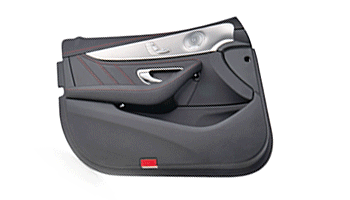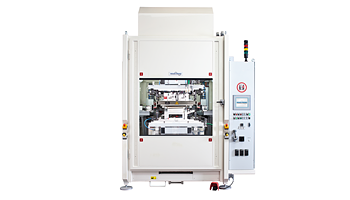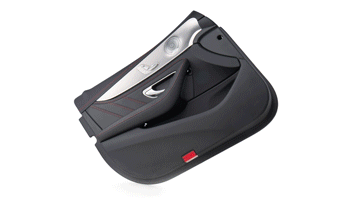SONOTRONIC GmbH
Becker-Goering-Str. 17-25
76307 Karlsbad, Germany
E-Mail: sales@sonotronic.de
Mon to Thu 8 am – 5 pm
Friday 8 am – 3 pm
Phone:
Hot plate welding
Ideal for welding large-area plastics
Hot plate welding is suitable for welding large-area plastic parts. The weld seams can be concealed and are characterized by their strength.
Because of its functional principle, hot plate welding is also called heat contact welding or mirror welding. The welding itself takes place in several stages separated in time: a mobile heating mirror first plasticizes the joining surfaces. The heating mirror then moves out of the joining area and the heated, melted surfaces are pressed together.
With hot plate welding, workpiece variations can be compensated very well. The welded joints are reproducible and can be hidden. After cooling, the seam strength is very high. Thermoplastics can be welded, especially workpieces with large-area joints or double shells. The process also offers the possibility of welding combinations of hard and soft plastics together.
SONOTRONIC develops and manufactures hot tool machines, e.g. for welding pressure vessels, pressure compensation vessels, pipe half-shells (household technology as well as electronics and electrical engineering) or glove compartments (automotive industry).
What is hot plate welding?
Machines for hot plate welding are used for welding thermoplastic parts. A characteristic feature of hot plate welding is the heating of the joining surface by a heated heating element adapted according to CAD data by means of contact or radiation heat. According to DIN 1910 Part 3, hot plate welding belongs to the category of welding by solid bodies of the process group pressure joint welding (of plastics).
A distinction is made between three process variants: Contact hot plate welding at temperatures between 180 °C and 350 °C is the most widespread. Shorter cycle times are achieved with high-temperature welding, which is also direct, at temperatures up to 400 °C. Indirect radiation hot plate welding requires temperatures of around 600 °C. Both standard machines and customer-specific special machines are available for hot plate welding. A distinction is made between the vertical machine type with vertical heating element and horizontal feed axes for the workpieces and the horizontal machine type with horizontally aligned heating element and vertical workpiece feed.
How does hot plate welding work?
In hot plate welding, the joining surfaces of the formed parts to be welded are heated by contact or radiant heat with the aid of a heated heating element (mirror) and then joined "under pressure". In practice, the contact heating element welding technique is predominantly used. This is a multi-stage process, since the heating and joining of the molded parts take place separately in time. After the parts to be joined have been fixed in a holding tool, they are moved against an electrically heated element. When the joining surfaces come into contact with the heating element, the welding process begins, which is divided into the process phases heating, changeover and joining.
When is hot plate welding used?
Hot plate welding is used to create material connections between thermoplastic parts. The process is also suitable for series production of complex three-dimensional joining surfaces. The quality of the connection in terms of reproducibility and high strength are particularly advantageous. A disadvantage is the longer cycle time (approx. 50 s) compared to ultrasonic welding and friction welding. Machines for hot plate welding are used in many user industries and for the production of a wide variety of product groups with thermoplastic molded parts and semi-finished products.
Advantages
- Very good compensation of workpiece fluctuations
- Reproducible welding results
- Welding of hard and soft plastics possible
Applications
- Coolant tank
- Glove box cover
- Clean air pipe
- Center console air duct
- Sun visor
- Circuit boards


